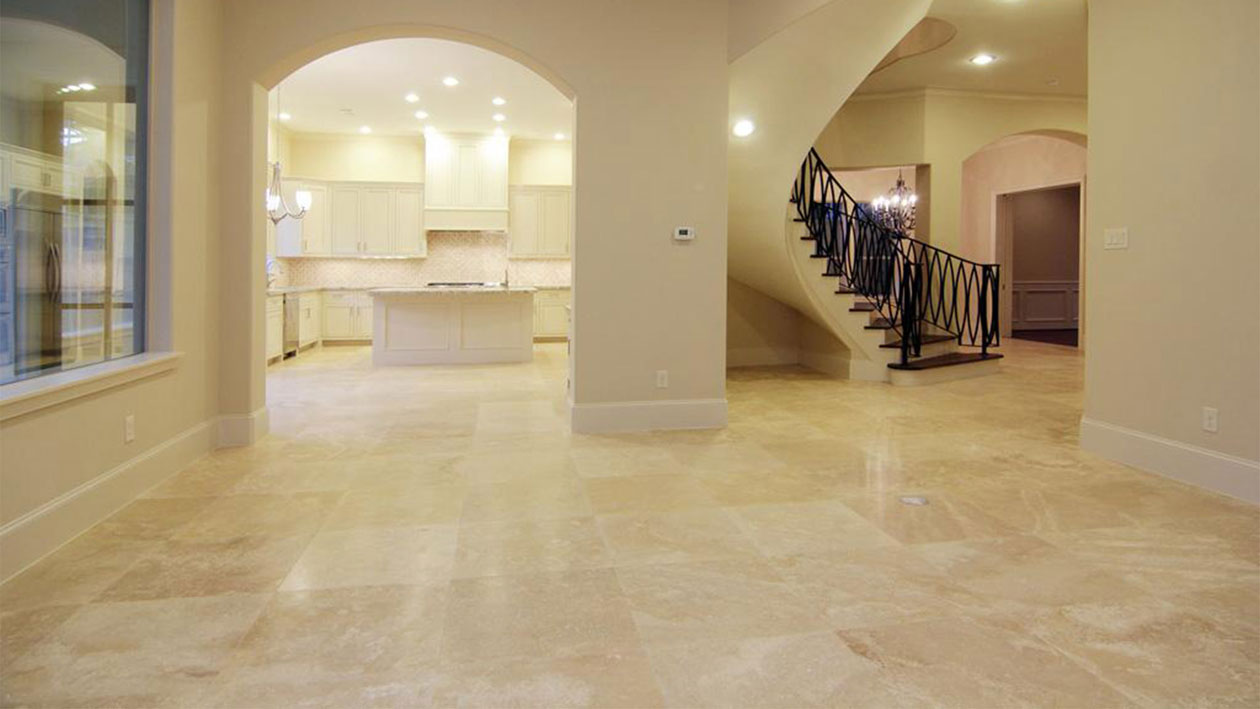How to Care for Your Limestone Floor
Limestone floors are more than just aesthetically pleasing; they are stunningly beautiful. Not only do they add value to your home; they also create a hard-wearing and durable surface that will last for decades. But just like any other flooring surface, they require care to always look their best.
The main thing to remember is that only a PH neutral cleaning product should be used to wash or mop the floor, or to spot wash a spill. Most household cleansers are acidic, but the acid will have a negative effect on the limestone, eating it away over time.
When the floor is first laid, it will have been sealed, so this will keep the floor in good shape for some time. But when water no longer beads on the top it is soaking into the floor, which means it is time to reseal. Being porous, limestone will absorb moisture – and stains – unless it is kept sealed.
Even when resealing, care must be taken not to use too much of the product in one spot in case it stains. It should be spread evenly, left for about 30 minutes to soak in, then the excess wiped off. The first sealing should occur before the grout is put in as even that can stain limestone. Two coats of sealant may be necessary. However, if the limestone has been crushed and mixed with cement to make the tiles, it will not be as porous.
The supplier will very likely give you instructions on the care of the floor and these should be followed carefully to ensure your beautiful floor is never spoiled.
Mistakes to avoid when cleaning limestone tiles
- Using bleach
- Flooding the floor with water
- Never rinsing the cleanser off
- Not changing dirty water frequently
- Leaving residual moisture in the cracks.
- Not wiping up spills immediately
Limestone tiles are best not used in a high traffic area as they can wear away. Even though we may think of stone as something that is hard, limestone is actually a soft stone. However, some companies add a harder product such as cement to crushed limestone to create beautiful but durable flooring tiles or blocks.
Reconstituted limestone has the same stunning look as natural limestone, with similar colouring, but it offers a more durable and long lasting option, especially for outdoor use.
It is possible for Limestone to stain through various causes:
- Accidental spills of tea, coffee, wine or ink indoors
- Moisture that gets into the product and moves the natural salts around
- Leaving debris such as dead weeds or leaves on it
- Rust stains can occur from embedded iron elements that were not sealed properly.
When the flooring is outdoors, cleaning the stain off and leaving it to bleach away in the sunlight will usually do the trick. However, rust stains should be investigated to find out what is causing them. External rust can be wiped off, but if the rust is coming from deep within, other maintenance will be needed. Sealing, or even removal of the rusting iron may be necessary.
No matter what type of flooring you have, it will need some kind of maintenance and care, so you may as well have the most beautiful one you can find. Most people would agree that limestone floors win in the beauty stakes.
